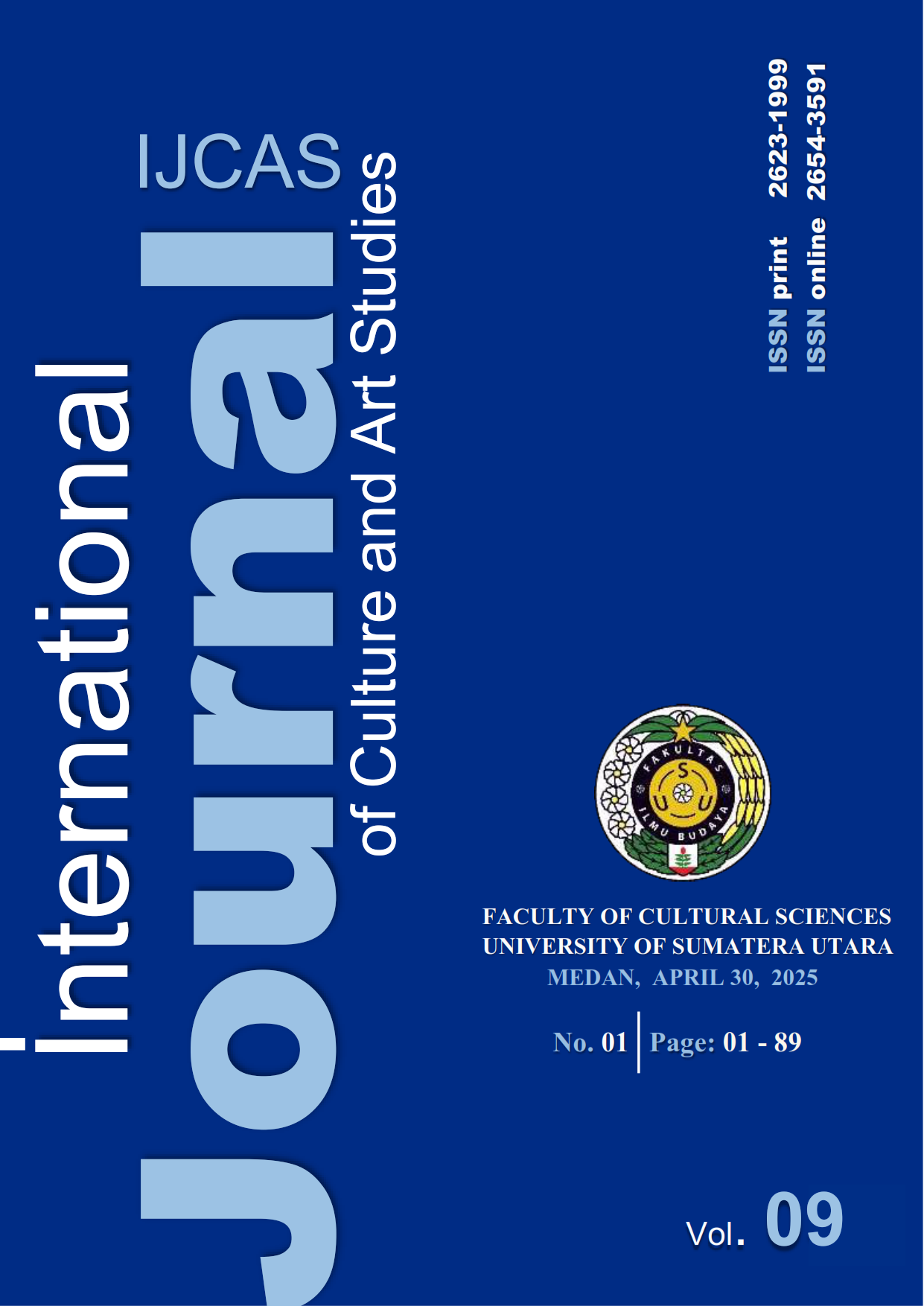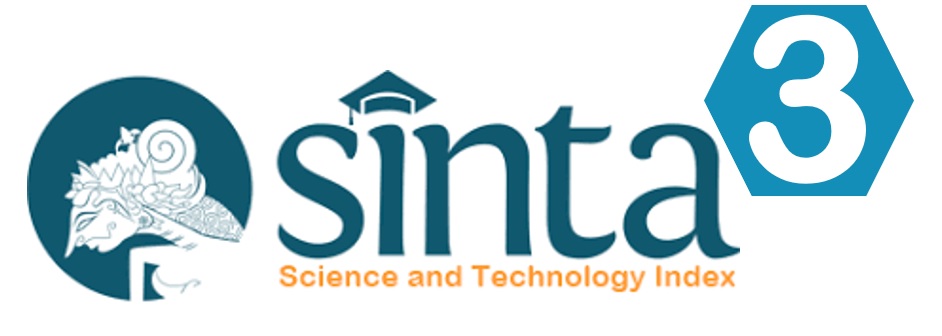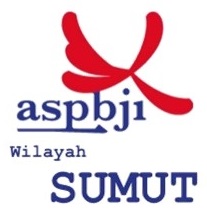The Art of Laughter: Exploring Humor in Warkop DKI Reborn
DOI:
https://doi.org/10.32734/ijcas.v9i1.20259Keywords:
Mise en Scene, Movie, Nostalgia, YouTubeAbstract
The art of humor often leaves a lasting impression, especially when it connects to joyful memories. Nostalgia refers to a longing for the past, often tied to moments of laughter and happiness. This study analyzes Warkop DKI Reborn: Jangkrik Boss Part 1 as a modern reflection of nostalgia for the original Warkop DKI films, focusing on the humor that defined the series. The study also examines YouTube comments to understand how audiences perceive the film's humor. A qualitative approach is used, with data from Warkop DKI - Chips (1982) Full Movie on the @LetsuGauki YouTube channel and WARKOP DKI Reborn | Jangkrik Boss Part 1 | Kalau Mau Dosa Sekalian Banyak, uploaded by Falcon YouTube. The analysis draws on the theories of Nostalgia for the Present from Salmose (2019), Mise en Scene from Manon de Reeper (2016), and Media Studies from Ott (2014). The findings indicate that the characters, costumes, humor, and settings in both the original and reborn films evoke a deep sense of nostalgia among Indonesians, demonstrating how the art of humor continues to bridge generations and maintain cultural relevance.
Downloads
References
Adryamarthanino, V., & Nailufar, N. N. (2021). Sejarah Oplet di Ibu Kota. Kompas.Com. https://www.kompas.com/stori/read/2021/08/31/080000879/sejarah-oplet-di-ibu-kota?page=all
Almughni, R. (2022). Film - CHIPS (1982). https://www.tribunnewswiki.com/2022/10/03/film-chips-1982.
Aziz, A., & Widodo, A. (2020). Humor, satire, and political commentary in Indonesian comedy: The enduring appeal of Warkop DKI. Asian Journal of Communication Studies, 21(3), 129-145. https://doi.org/10.1080/148379209.2020.1234567.
Bradbury, J. (2012). Narrative possibilities of the past for the future: Nostalgia and hope. Peace and Conflict, 18(3). https://doi.org/10.1037/a0029069
Critical Media Studies. (n.d.). The University of Texas, Dallas.
Dailymotion. (2023). WARKOP DKI - Salah Masuk (1993). https://www.dailymotion.com/video/x8ol0ok.
Elliott, A. (2021). The role of nostalgia in contemporary media: Revisiting past cultural artifacts in a digital age. Journal of Media and Cultural Studies, 34(2), 220-239. https://doi.org/10.1080/03057370.2021.1875321.
Elsha, D. D. (2020). The Commodification of Female Sensuality in Indonesian Film Industry: Case Study of Warkop DKI. IKAT: The Indonesian Journal of Southeast Asian Studies, 4(1). https://doi.org/10.22146/ikat.v4i1.53188
Ensiklopedia Dunia. (2023). Warkop DKI Reborn: Jangkrik Boss! Part 1. https://p2k.stekom.ac.id/ensiklopedia/Warkop_DKI_Reborn:_Jangkrik_Boss!_Part_1
Ensiklopedia Dunia. (2024). Pontiac Chieftain. https://p2k.stekom.ac.id/ensiklopedia/Pontiac_Chieftain
Erfianto, D., Haryanti, D., & Sutopo, A. (2018). Pragmatic Analysis Of Humor Used In English Subtitle Of The Movie Entitled Warkop Dki Reborn: Jangkrik Boss Part I. UNIVERSITASMUHAMMADIYAH SURAKARTA.
Falcon. (2021). WARKOP DKI Reborn | Jangkrik Boss Part 1 | Kalau Mau Dosa Sekalian Banyak. https://www.youtube.com/watch?v=m3U03b9yHKk.
Insider, T. M. (2020). How to read mise en scéne; Visual film analysis explained!
Jafari, N., & Hanif, N. (2020). Nostalgia as a marketing tool: Reconnecting audiences with the past through Warkop DKI Reborn. International Journal of Media Marketing, 5(1), 45-61. https://doi.org/10.1080/25790738.2020.1689042.
Kusuma, A., & Suksmawati, H. (2017). Textual Analysis of Official Teaser, Original Soundtrack Video and Behind The Scene’s Film Warkop DKI Reborn: Jangkrik Boss Part 1, As The Highest Grossing Indonesian Film of All Time. Sintok.
LetsuGauki. (2019). Warkop DKI - Chips (1982) Full Movie.
Mel Helitzer & Mark Shatz. (2005). Comedy Writing Secrets: The Best-Selling Guide to Writing Funny and Getting Paid for It. WRITER’S DIGEST BOOKS.
Ott, B. L. (2014). Introducing Critical Media Studies. John Wiley & Sons, Inc.
Pudjiastuti, C. (2017). Lebaran dan Liburan Bareng Warkop. https://www.kompas.id/baca/metro/2017/07/02/lebaran-dan-liburan-bareng-warkop.
Purnama, I., & Hadi, D. (2020). The evolution of humor and cultural identity in Indonesian films: From Warkop DKI to the Reborn era. Journal of Southeast Asian Cultural Studies, 9(1), 55-74. https://doi.org/10.1016/j.jsacs.2020.02.004.
Reeper, M. D. (2016). Film Analysis For Beginners: How To Analyse Movies. (Kindle Edi).
Salmose, N. (2019). Nostalgia Makes Us All Tick: A Special Issue on Contemporary Nostalgia. In Humanities (Switzerland) (Vol. 8, Issue 3). https://doi.org/10.3390/h8030144
Sedikides, C. Wildschut, T., & Baden, D. (2004). Nostalgia; Conceptual Issues and Existential Functions. In Handbook of Experimental Existential Psychology.
Sutrisno, T. (2019). The legacy of Warkop DKI: Nostalgia, humor, and gender roles in Indonesian popular cinema. Film and Cultural Studies Review, 11(3), 303-319. https://doi.org/10.1080/23227607.2019.1636892.
Downloads
Published
How to Cite
Issue
Section
License
Copyright (c) 2025 Lambok Hermanto Sihombing

This work is licensed under a Creative Commons Attribution-ShareAlike 4.0 International License.













